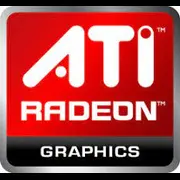ATI Radeon HD 4890

ATI Radeon HD 4890: Nostalgia or Practicality in 2025?
An Analysis of a Legendary Graphics Card Through the Lens of Modernity
Introduction
In 2009, the ATI Radeon HD 4890 became a symbol of high performance for gamers and enthusiasts. However, 16 years later, its relevance raises questions. Let's explore whether this graphics card is worth attention in 2025, and who might find it useful.
1. Architecture and Key Features
RV790 Architecture
The HD 4890 is built on the RV790 architecture with a 55 nm manufacturing process—revolutionary for 2009, but today such standards seem archaic (modern GPUs use 5–7 nm). The chip contained 959 million transistors and 800 stream processors.
Unique Features
Unlike modern technologies (DLSS, RTX), the HD 4890 supported only DirectX 10.1 and OpenGL 3.3. Among its standout features were GDDR5 technology and enhanced tessellation, but ray tracing or AI upscaling were not options.
Conclusion: The HD 4890's architecture is a relic of the pre-parallel computing revolution. Its potential for modern tasks is extremely limited.
2. Memory
Type and Size
The graphics card came equipped with 1 GB GDDR5 on a 256-bit bus. For 2009, this was generous: the buffer allowed for comfortable gaming at a resolution of 1920×1080.
Bandwidth
The memory clocked in at 3900 MHz (effective), providing a bandwidth of 124.8 GB/s. In comparison, even a budget-friendly Radeon RX 6500 XT (2024) offers 224 GB/s thanks to GDDR6.
Impact on Performance
By 2025, 1 GB of memory is critically insufficient. Modern games (e.g., Cyberpunk 2077 or Starfield) require a minimum of 4–6 GB even at 1080p. The HD 4890 would suit indie projects or older games at best.
3. Performance in Games
Real FPS Examples (in 2009)
- Crysis (Very High, 1080p): 25–30 FPS;
- Left 4 Dead 2 (Ultra, 1080p): 60+ FPS;
- World of Warcraft (Ultra, 1080p): 45–50 FPS.
Modern Games (2025)
Even on low settings, the HD 4890 would struggle with GTA VI or The Elder Scrolls VI. In Fortnite (1080p, Low), expect 10–15 FPS due to memory limitations and outdated drivers.
Resolutions and Ray Tracing
The card does not support 4K or ray tracing. Its ceiling is 720p–1080p for games released up to 2012.
4. Professional Tasks
Video Editing and 3D Modeling
The HD 4890 supports OpenCL 1.0, but this is insufficient for modern applications (Blender, Adobe Premiere Pro). Rendering a simple 3D scene would take 10–20 times longer than on a budget Radeon RX 6400.
Scientific Calculations
The lack of CUDA support and modern APIs renders the card useless for machine learning or simulations.
5. Power Consumption and Heat Generation
TDP and PSU Requirements
The TDP of the HD 4890 is 190 W. A power supply of at least 500 W is recommended for systems with this card.
Cooling and Cases
The standard cooler is noisy (up to 45 dB under load). A case with good ventilation (at least 2 fans) is recommended, or upgrading to a modern AIO cooler (compatibility with mounts is questionable).
6. Comparison with Competitors
Contemporaries (2009–2010):
- NVIDIA GeForce GTX 285: Offers higher performance in DirectX 10, but at a higher price ($350 vs. $250 for HD 4890).
- AMD Radeon HD 5870: Direct successor with support for DirectX 11—30–40% faster.
In 2025:
Even budget cards like the NVIDIA GTX 1650 ($150) or AMD Radeon RX 6400 ($130) outperform the HD 4890 by 5–7 times in performance.
7. Practical Tips
Power Supply
Minimum 500 W with an 80+ Bronze certification. Examples: Corsair CX550M, EVGA 500 BQ.
Compatibility
- Interface: PCIe 2.0 x16 (compatible with PCIe 3.0/4.0 but with bandwidth limitations).
- Drivers: Official support has ended. Try enthusiast builds or Linux with open-source drivers.
Notes
- Does not support UEFI BIOS—booting on newer motherboards may have issues.
- Adapters (DVI → HDMI) will be needed for connecting to monitors via DisplayPort or HDMI 2.1.
8. Pros and Cons
Pros:
- Low secondary market price ($20–50);
- Suitable for retro gaming (Windows XP/Vista, DirectX 9–10);
- Easy thermal paste replacement extends lifespan.
Cons:
- Does not support DirectX 12 and modern APIs;
- High power consumption;
- Lack of drivers for Windows 11/12.
9. Final Conclusion: Who is the HD 4890 For?
This graphics card is suitable for:
1. Collectors and enthusiasts building retro PCs;
2. Owners of older systems needing a replacement for a burnt-out GPU;
3. Overclockers experimenting with clock speeds (the core easily reaches 1 GHz).
For gaming in 2025, video editing, or work with AI, the HD 4890 is not suitable. If your budget is limited to $100–150, it’s better to choose a new Radeon RX 6400 or a used GTX 1060—they will offer significantly more capabilities.
Conclusion
The ATI Radeon HD 4890 is an important part of GPU history, but in 2025, its role is niche. It serves as a reminder of how far the industry has come, helping to appreciate modern technologies.
Basic
Memory Specifications
Theoretical Performance
Miscellaneous
Benchmarks
Compared to Other GPU
Share in social media
Or Link To Us
<a href="https://cputronic.com/gpu/ati-radeon-hd-4890" target="_blank">ATI Radeon HD 4890</a>